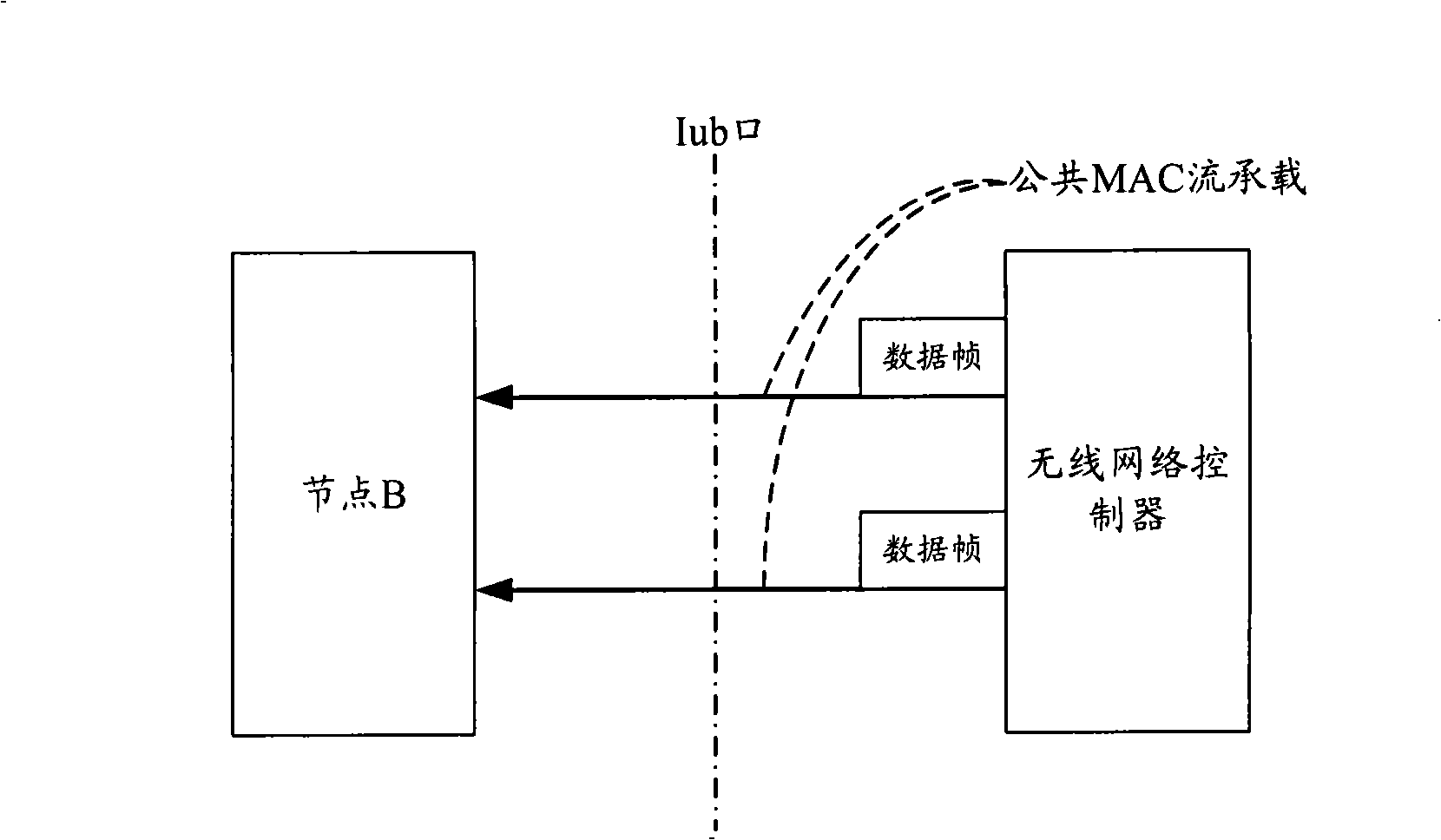Method for indicating customer equipment capability under non-CELL_DCK state
A user equipment and indication technology, applied in the field of wireless communication, can solve problems such as system efficiency decline, unclear specific information, waste of system resources, etc., and achieve the effect of reasonable scheduling and allocation of resources
- Summary
- Abstract
- Description
- Claims
- Application Information
AI Technical Summary
Problems solved by technology
Method used
Image
Examples
example 1
[0042] In one cell, one common H-RNTI corresponds to multiple UEs, but in one HS-DSCH TTI (Transmission Time Interval), one common H-RNTI only corresponds to one UE. Even if the RNC allocates a dedicated H-RNTI for the UE, the Node B cannot know the specific information of the UE. When the RNC sends the public MAC flow data frame to the Node B, it will bring the H-RNTI of the UE to which the data frame should point, so the HS-DSCH physical layer capability information of the UE can be brought to the Node B in the data frame.
[0043] Therefore, in this example, the RNC carries the wireless access capability information of the UE through the data frame of the Iub port. Specifically, the RNC carries the information of the UE corresponding to the H-RNTI in the same data frame through the idle bits in the data frame of the Iub port. Wireless access capability information.
[0044] in, Figure 5 The Iub port data frame structure provided in this example is shown, in the data fram...
example 2
[0047] In Example 1, the user plane frame protocol is used to transmit related UE capability information, which can achieve real-time effect. However, if more user information is desired to be transmitted, it needs to be transmitted through the control plane. A disadvantage of transmission on the control plane is that transmission delay may cause asynchrony with the data frame, and the RNC needs to ensure that the capability information is sent to the Node B before transmitting the MAC flow data of the UE.
[0048] Therefore, in this example, the RNC can transmit the radio access capability information of the UE to the NodeB through the control plane signaling of the Iub interface. In the current Iub control plane NBAP (Node B Application Part) protocol, for UEs in CELL_FACH and CELL_PCH states, there is no need to create a dedicated communication interface between RNC and Node B, and only need to send control plane signaling on the common communication port (Including: user ...
PUM
 Login to View More
Login to View More Abstract
Description
Claims
Application Information
 Login to View More
Login to View More - R&D
- Intellectual Property
- Life Sciences
- Materials
- Tech Scout
- Unparalleled Data Quality
- Higher Quality Content
- 60% Fewer Hallucinations
Browse by: Latest US Patents, China's latest patents, Technical Efficacy Thesaurus, Application Domain, Technology Topic, Popular Technical Reports.
© 2025 PatSnap. All rights reserved.Legal|Privacy policy|Modern Slavery Act Transparency Statement|Sitemap|About US| Contact US: help@patsnap.com



